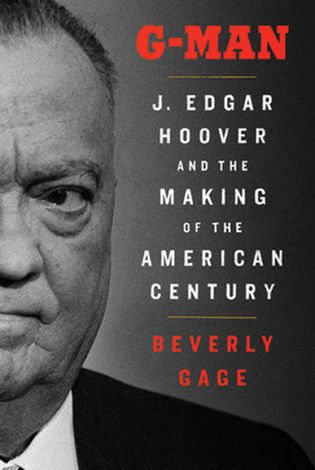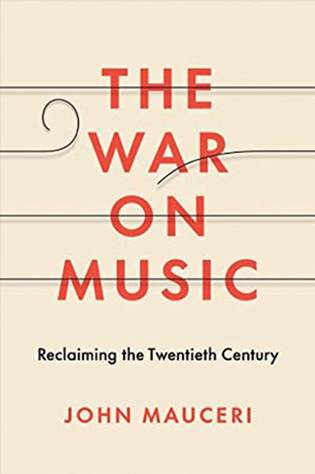
G-Man: J. Edgar Hoover and the Making of the American Century
Beverly Gage, Professor of history and American studies
Viking, $40
Reviewed by James Ledbetter ’86
J. Edgar Hoover’s phenomenal career is one giant contradiction: a social conservative who expanded his power under liberal presidents, a demonstrably gay man who hounded gay government employees out of their jobs, a defender of civil liberties who was untroubled by wiretapping innocent people, a peddler of secrets who managed to keep quite a few of his own.
In Beverly Gage’s masterful account, we watch Hoover rise from a modest upbringing to a justice department bureaucrat just after World War I. It is almost impossible to imagine how little power and authority the Bureau of Investigation had when Hoover joined it in 1919; the glamorized, gun-toting “G-Men” agents were years away. The growth of the Bureau and Hoover’s personal empire-building were inseparable. Hoover tended to recruit agents who shared the ethos of his college fraternity, Kappa Alpha, which claimed ties to the Ku Klux Klan, and that culture affected the Bureau’s politics.
Gage notes the irony that the president who most empowered Hoover’s conservative enclave was the great liberal, FDR. The country was outraged over gangsters like Machine Gun Kelly and Pretty Boy Floyd, and a strengthened federal law enforcement agency served FDR’s purposes well. Hoover learned to pivot his politics and priorities to satisfy future presidents; Johnson even allowed him to avoid the mandatory retirement required of other federal employees. At one point, Hoover was the most popular person in American public life—but following the political investigations of the 1960s, the exposure of his nakedly racist views tarnished his reputation. While today we have a national holiday honoring Martin Luther King Jr., it’s easy to forget that King was a highly controversial figure in the 1960s, when Hoover’s power and reputation were at their height. Hoover was convinced that King’s entourage included Communists actively working on behalf of the Soviet Union. He used this to justify not only wiretapping King, but also making malicious attempts to blackmail him, leak to reporters that King was a “sexual degenerate,” and try to drive him to suicide. Some who knew Hoover thought he had become senile. But he never left office, and he died of a heart attack while still director of the FBI.
This must-read biography pokes at a sore spot in American history. We are all familiar with the Red Scares, both before World War II and more intensely after it. While there were genuine Soviet spies in and around sensitive government areas, the threat was vastly exaggerated, and even staunchly anti-Communist Hoover was appalled at the grandstanding of Joe McCarthy. Indeed, Gage demonstrates how Hoover deftly used McCarthy to position himself as the responsible face of anti-Communism.
But there was also a “Lavender Scare” that went hand-in-hand with the postwar Red Scare. The reasoning was: almost any government employee (these were primarily but not exclusively men) with homosexual tendencies was a security risk, because the closeted activity could be used for blackmail to compromise state secrets. Many historians contend that thousands of government employees lost their jobs under suspicion of being gay or lesbian.
And yet, two of the people at the very top of enforcing the Red and Lavender Scares—Hoover, and McCarthy’s belligerent lawyer Roy Cohn—were themselves, perhaps depending on one’s definition, gay. In Cohn’s case, the list of male lovers is well known. Hoover was to some degree discreet, and Gage sticks closely to the known historical record, but his decades-long relationship with Clyde Tolson strikes the twenty-first-century reader as an obvious gay marriage. (McCarthy himself was said to have had sex with men, but the evidence trail there is relatively thin.)
Is this a coincidence? A paradox? Evidence of rank hypocrisy in high places that cruelly and unnecessarily persecuted thousands of people? It’s a crucial, fascinating debate, yet not one taking place in our public spaces. It’s impossible to avoid the conclusion that America has never reckoned with the sexually oppressive aspects of the Cold War, nor is it even clear what such a reckoning would look like. That’s not the goal of Gage’s book. But perhaps it can compel us in that direction.
James Ledbetter ’86 is executive editor of The Observer and author of One Nation Under Gold.
__________________________________________________________________

The War on Music
John Mauceri ’67, ’70MPHIL
Yale University Press, $28
Reviewed by Kathrin Day Lassila ’81
Today, Igor Stravinsky’s Rite of Spring is a must-listen for anyone interested in classical music. But in 1913, when the Rite first hit the stage, the audience famously responded “with whistles and the throwing of programs [and] the occasional fistfight”—as John Mauceri ’67, ’70MPhil, reminds us in his fascinating, fast-paced overview of twentieth-century composers and their creations.
Throughout, Mauceri delves into personal stories and anecdotes about the composers, their work, and their personalities. Take Stravinsky: in 1913, he was eager for war to start, because he believed war would get rid of the weak and make the world stronger. (Instead, World War I is estimated to have killed some 20 million people and wounded some 21 million more.) Arnold Schoenberg is widely known for inventing the twelve-tone method, but very few know that he was a mentor to George Gershwin—let alone that in 1908 his wife left him for a young painter, who hanged himself after she returned to Schoenberg.
The most painful parts of the book are the pages on Richard Wagner and Adolf Hitler. Wagner (1813–1883) was a superb composer, and moreover, for the Ring cycle, he directed the staging, the scenery, and the singers’ timing, movements, and even gestures. Mauceri writes that Wagner’s aim was to produce a “total artwork,” in which “every aspect of the musical and dramatic experience was controlled by a single person—himself.” Wagner died in 1883, fifty years before Hitler came to power. But, as Mauceri notes, Wagner ranted freely and often against Jews. He also published anti-Semitic articles. Hitler would eventually find, read, and admire those articles.
Later, Hitler would demand that what the Nazis called “degenerate music” be obliterated. That included the work not only of the many German Jewish composers who had recently unleashed a new flowering of musical creativity, but also of some non-Jewish German musicians. Paul Hindemith’s 1929 comic opera News of the Day included a naked woman singing in a bathtub, and that infuriated Goebbels. Hindemith had to leave Germany for Turkey, but he was safe. As a non-Jew, he could escape the massive tragedy of the Holocaust. (Later, he would teach and compose at Yale.)
Composers don’t always live to hear their applause. The brilliant Erich Korngold wrote an opera, The Miracle of Heliane, in 1927. It was performed in Berlin in 2017 and celebrated as the work of a master. But Korngold’s daughter-in-law, then 93, wept. She remembered how ferociously her father-in-law had been scorned for his work. The ovation in Berlin, she said, was “so sad because it comes so late.”
One element of the book that I didn’t expect was movie music. Ever since the early 1930s, almost every movie and every television show has used music to shape the feelings of the audience. You can be fixated on a plotline without noticing that the music is magnifying your enjoyment (or your nerves). It surprised me that Mauceri—who has conducted many of the great orchestras, produced at least 75 CDs, and won numerous awards—has also conducted movie music for live audiences. He confesses that at first, “like most classical music snobs, I thought that movie music wasn’t worth my serious attention.” But he came around.
Mauceri points out that when the late Ennio Morricone started conducting his avant-garde music in the first half of a concert, and excerpts of his film scores in the second half, the second half always had more listeners. But that’s one of the delights of fine orchestras: they’re versatile. They can play “Turkey in the Straw,” or they can play Dvorak’s New World Symphony, and listeners can choose their preference.
The book touches on many types of music. A smattering: Anton Webern’s (1883–1945) “remarkably short and highly structured music”; late-twentieth-century harmonies with “subtly morphing rhythmic patterns”; computer-produced music in last years of the 1900s; and, if you’re up for it, even Gone with the Wind. Mauceri urges us to listen to music we’ve never heard before, and reminds us that extraordinary compositions, despised in their time—sometimes for political reasons—can be found and brought back.
It takes an excellent conductor to lead an orchestra, and it takes an excellent writer to keep readers reading. Mauceri has both skills. Meanwhile, the music plays on, continually changing and rejuvenating.
Kathrin Day Lassila ’81, editor of the Yale Alumni Magazine, is an amateur violinist.
 loading
loading
